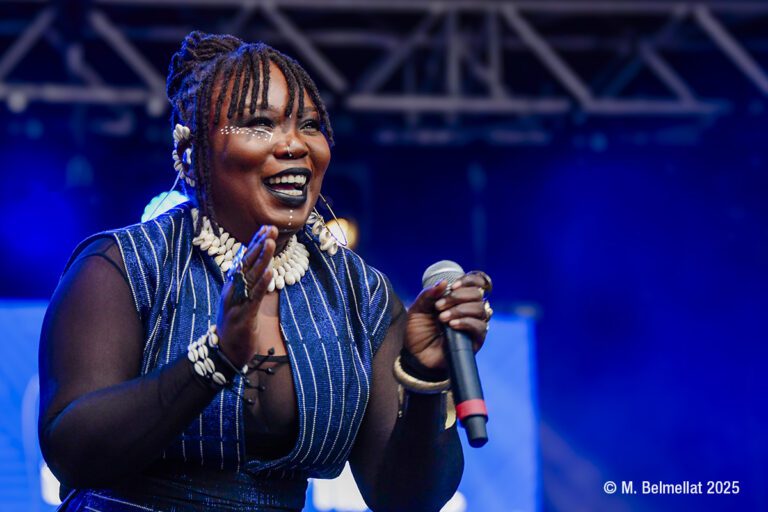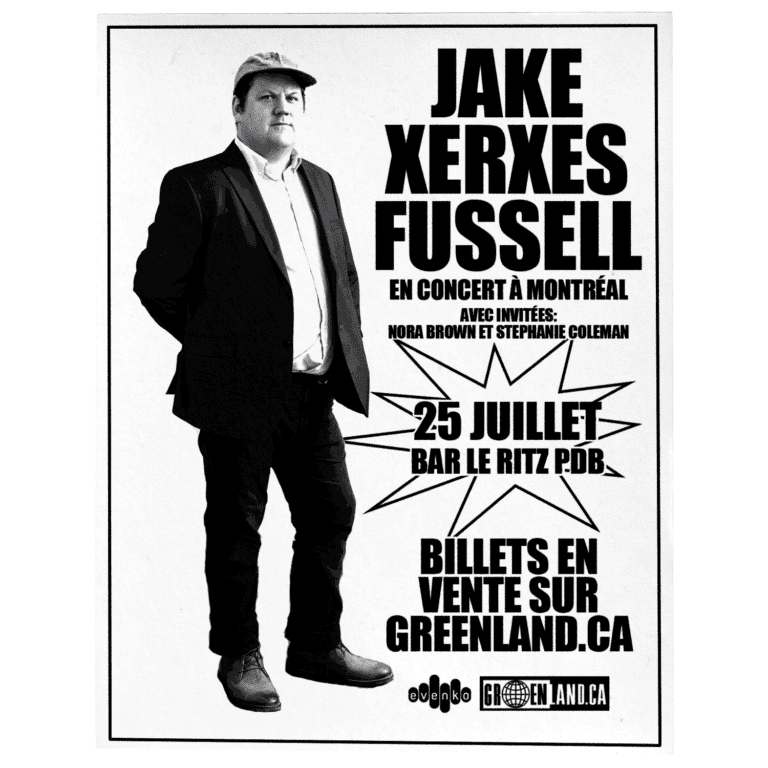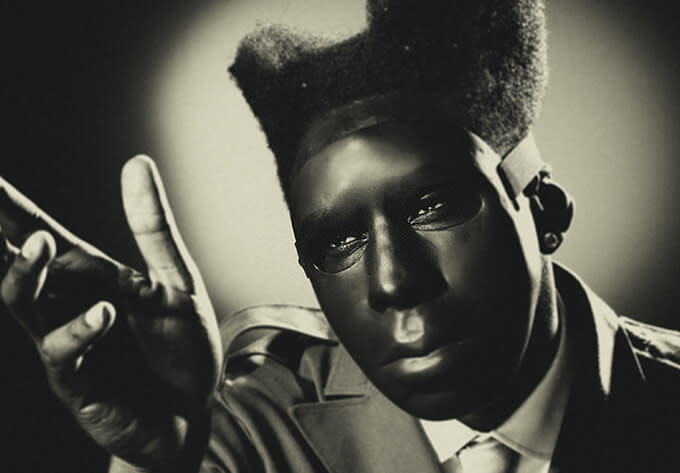I said that Tyrane Mondeny was a rising star following my interview with her a few days before her arrival in Montreal. But after last night’s show on the Scène Loto Québec in the Femmes du monde des Nuits d’Afrique series, Lionne Tyrane showed us that she is now playing in the big league.
Always with an African touch in her outfits, she arrived on stage after her musicians, and from the very first track she was already on fire, presenting us with her Mandingo soul, mixed with gospel and R&B, with rhythms from her home in Côte d’Ivoire. Keyboard, bass, guitar, drums – these were the instruments that accompanied the artist who loves to showcase her musicians. On several occasions, she moved closer to them to let them shine in their turn. I recognized the one everyone’s been snatching up on guitar, the Senegalese giant Assane Seck, who accompanies several artists in Montreal.
We recognize some Arab sounds in one of the opening tracks, a small allusion to her adopted country, Morocco, but also American soul, which she masters particularly well, with impeccable English.
“I’ve travelled 12,000 km to be here tonight,” she says, before launching into a song paying tribute to women and denouncing the violence they suffer.
A new feature of this concert is that she plays guitar, an instrument she adds to her many strings, in addition to the percussion she plays on stage and a traditional Ivorian instrument consisting of a metal rod.
She also pays a moving tribute to her parents in heaven, in the track Prayer, which the audience felt even without understanding the lyrics. After this gentle passage, she’s back to being the lioness we know, and continues her rampage, with dance steps worthy of a professional (she has a background as a dancer) while interacting with her guitarist.
“Are there any Ivorians in the audience?” she asked the growing crowd, but we didn’t have many answers.
She covered a classic of her own, which seemed to be appreciated by the audience for its spiritual aspect, before paying tribute to the children, in a song rich in emotion. She managed to get the crowd singing along, responding to her every instruction. It’s clear that Tyrane is in control and feeling increasingly comfortable on stage.
She quickly invites a dancer on stage, whom I didn’t know, and with whom she does a few traditional dance steps.
“If I’m here tonight, it’s thanks to two people who are here tonight: Veeby and Fredy Massamba”, alluding to the instigators of the Festival afropolitain nomade, in which she has participated on several occasions.
She finished with some of her classics, including her hit Hakuna Matata, in a joyous and cheerful mood, in front of an audience who were discovering her for some, who may have seen her at Balattou last November, or at Afromusée in June 2024 for others.
The rising star has arrived at his destination, and the Nuits d’Afrique audience was there to see it. We wish him even bigger stages, an even bigger audience and endless success.
Photo Credit: M. Belmellat











